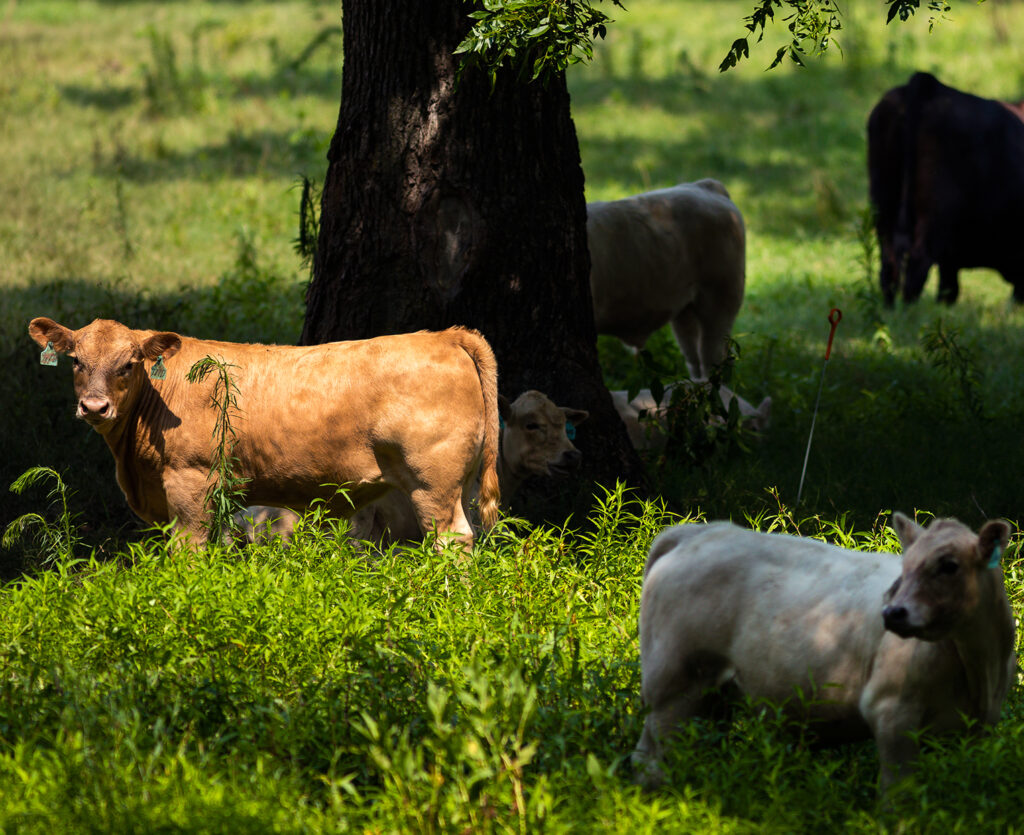Noble Ranches
Noble’s ranches serve as a living laboratory for research and provide space to test theories, implement new practices and showcase real-world decision-making impacts on land, livestock and operations. Across 13,500 acres in southern Oklahoma, Noble’s ranches offer insights into the future of regenerative ranching in the United States.
Coffey Ranch
Coffey Ranch is home to two cow herds grazing separately for Noble’s Metrics, Management & Monitoring grant from the Foundation for Food & Agriculture Research (FFAR). This project, in part, compares outcomes between prescriptive grazing and adaptive grazing strategies. Additionally, the ranch managers are working toward restoring more grazable land through several brush encroachment projects.
The ranch was named after D. Joyce Coffey, a long-time Love County rancher who willed the land to Noble Research Institute upon his death in 1981. Noble leased the land from the D. Joyce Coffey Trust until 2002 when Noble purchased the ranch.
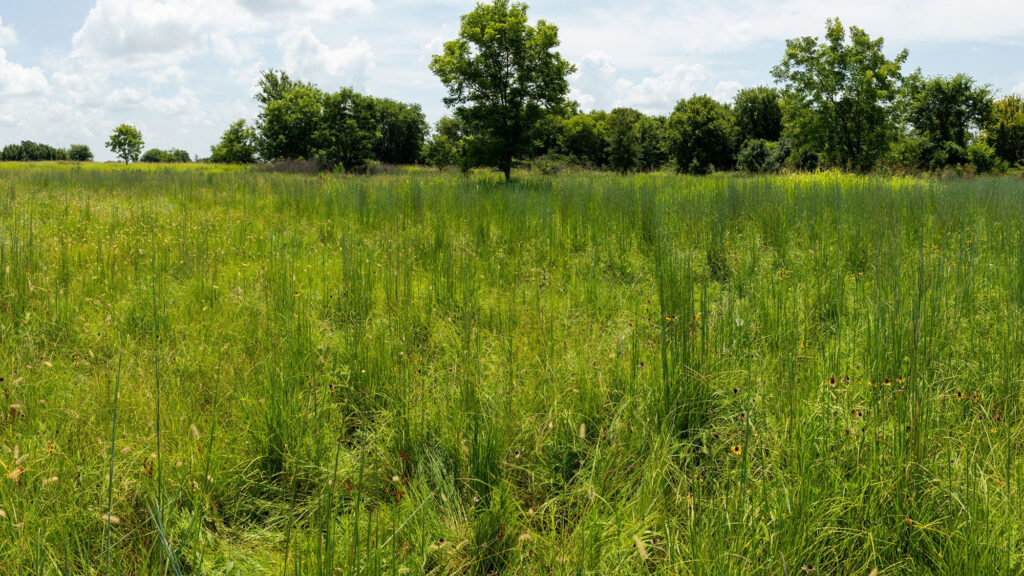
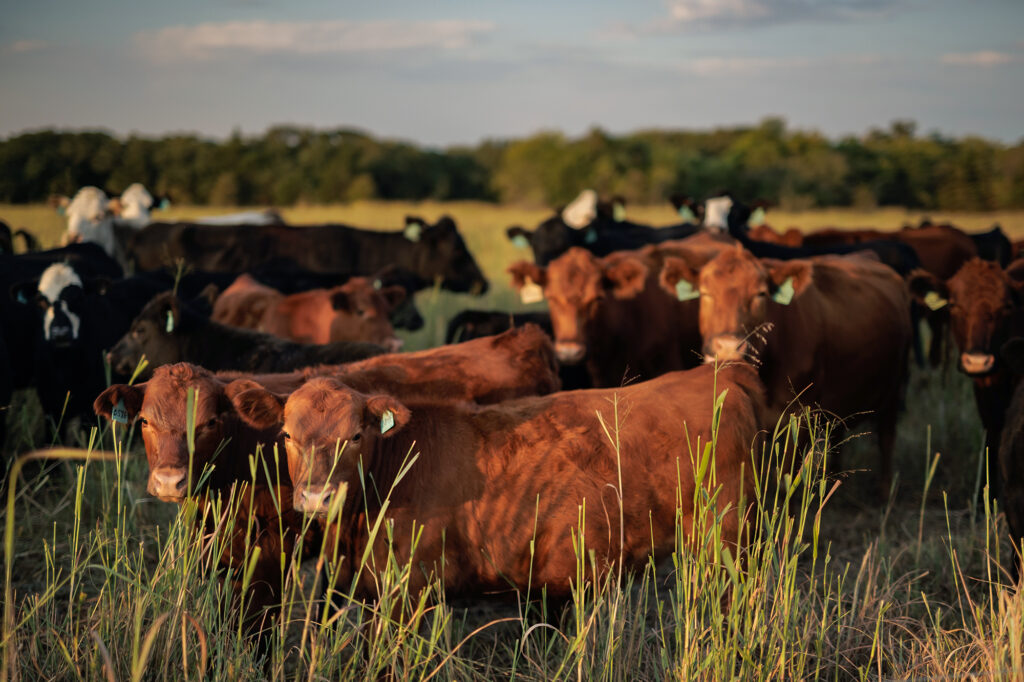
In 1988, Noble initiated a long-term project to manage the ranch holistically, under the Savory system. Through the application of managing the stocking rate below carrying capacity, providing adequate rest/recovery, and short graze periods on the native grass pastures, and occasional prescribed fires (no herbicides or fertilizer used), the ranch’s carrying capacity increased from about 10,000 animal unit days to over 35,000 animal unit days by 1998.
Between 2000 and 2017, the emphasis shifted to wildlife habitat management with prescribed burns being applied occasionally to enhance habitat in the native range areas. In 2021, regenerative management and adaptive grazing were initiated again across the entire ranch. Much of the ranch is native pasture, with some introduced pastures near the original homestead that are inter-seeded with cool season annuals.
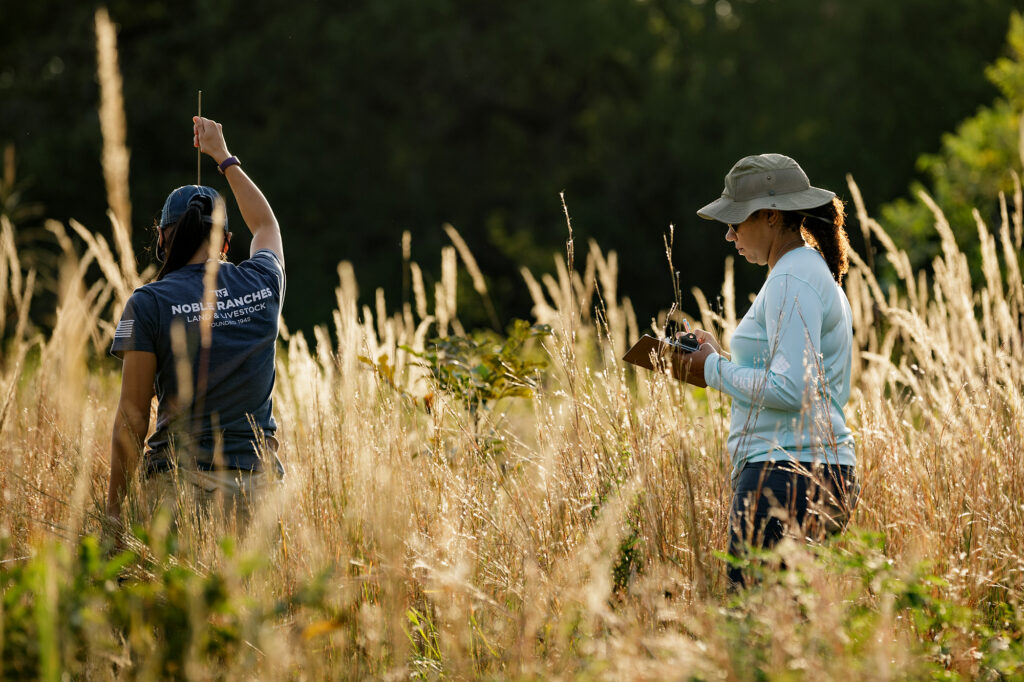
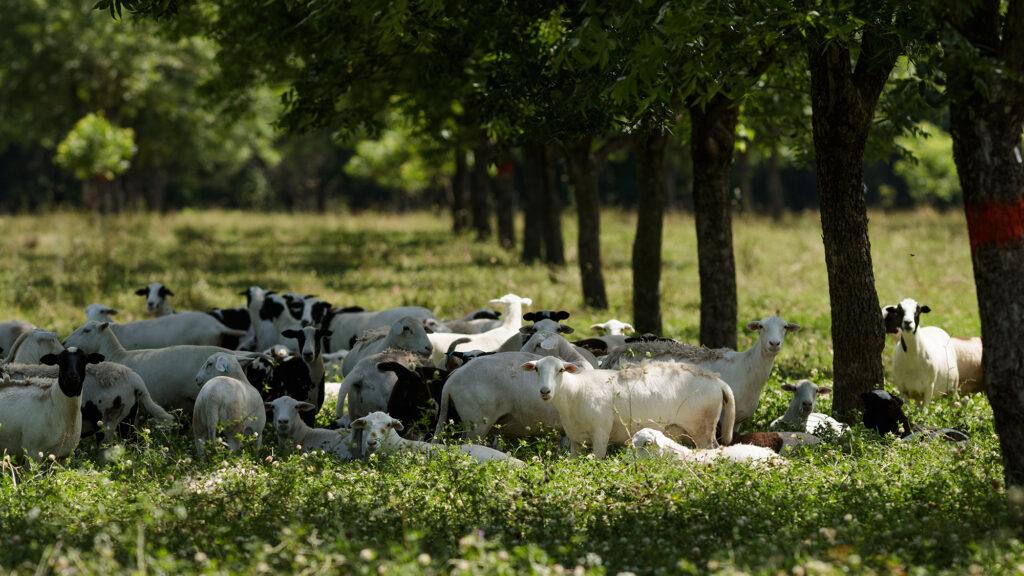
Conrad-McMillan Orchard and Farm
The only ranch where cattle is not the primary enterprise is our Conrad-McMillan Orchard and Farm. The work at the 348-acre farm focuses around its 24-acre silvopasture pecan orchard. A small flock of hair-sheep and a vigilant guard-donkey graze under the canopy year-round. Small groups of cattle are adaptively grazed for short periods each year when there is excess forage.
The ranch was leased from Jim Conrad for about a decade to conduct pecan and small grain research activities before it was purchased from the Conrad family in 2018. In 2022, the orchard and farm transitioned from conventional to regenerative management. One team of researchers visits the orchard and surrounding fields often to measure soil conditions and other variables related to the transition of the land to regenerative management. Another team of researchers focuses on the orchard, especially tree health and productivity and nut quality.
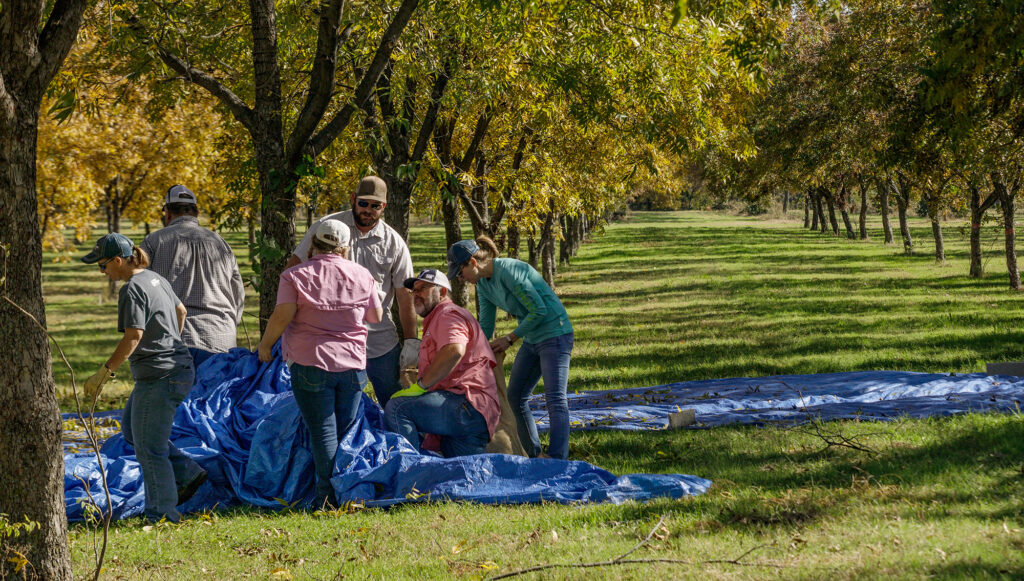
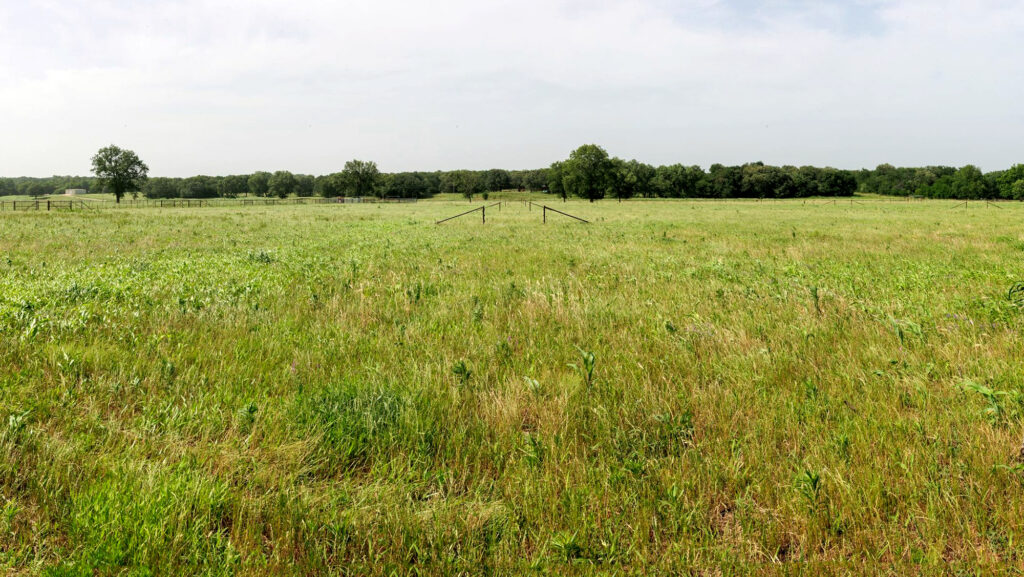
Headquarters Ranch
Noble’s Headquarters Ranch surrounds the main office buildings along Sam Noble Parkway outside of Ardmore, Oklahoma. The 812-acre Headquarters Ranch, including nearby Dupy Facility, supports grazing needs for all Noble livestock. Often, livestock from other Noble ranches are grazed at Headquarters Ranch as needed. Cattle, sheep and goats, often yearlings, are grazed on Headquarters and Dupy intermittently as forage is available.
The original Headquarters area (170 acres) was purchased in 1950 and is where the main campus still resides. Additional land was purchased over several decades as adjacent land became available.
Across most of the ranch, managers are working to restore introduced pastures and grazed cropland to native or “naturalized” pastures through grazing.
Historically, Headquarters was managed using “best management practices” for the conventional use of fertilizer and herbicides for production outcomes and applied grazing and pasture management demonstrations. More recently with the addition of land purchased, several areas were used exclusively as replicated research plots for introduced forage studies.
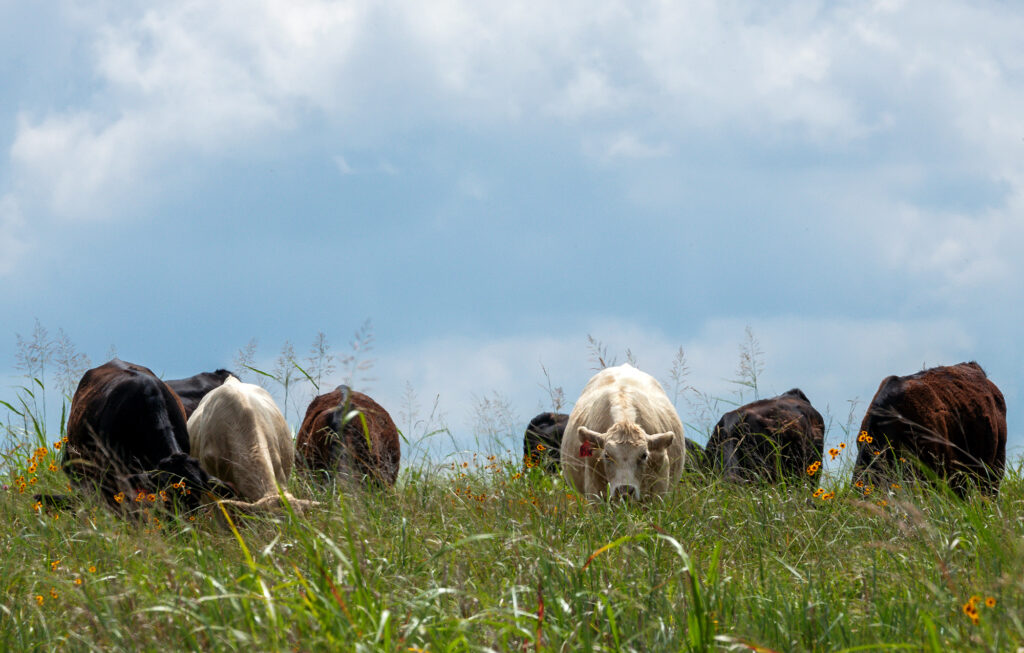
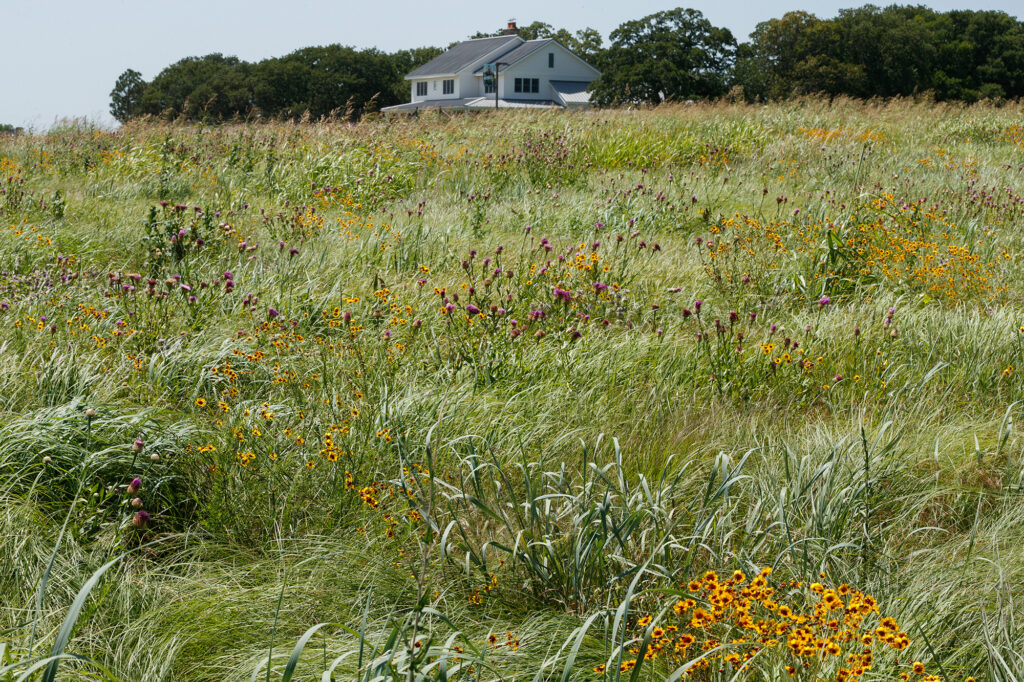
A small portion of Headquarters Ranch is dedicated to tree cultivation. Trees are developed and transplanted into grazing pastures for pecan production as part of a silvopasture project centered around adding shade for livestock. In 2021, the orchard and farm transitioned from conventional to regenerative management.
Dupy Facility was purchased in 2003. It is made up of mostly high-quality, Class II cropland now used as grazed cropland and introduced pasture. Dupy is typically planted in cool and warm-season annuals each season for grazing. Historically, Dupy was used exclusively for replicated forage research trials.
Oswalt Ranch
The largest of Noble’s ranches, Oswalt Ranch is 5,169 acres in southern Love County, Oklahoma. The property is about 50% native grass grazing land and 50% post oak woody complex timber. This ranch is home year-round to an actively managed herd of cattle, with goats added through the growing season. Both herds serve to improve the landscape and help the ranch managers return more acres to native grass grazing land and reduce brush encroachment. In 2021, the ranch transitioned from conventional to regenerative management.
Oswalt Ranch was donated to Noble by D. Joyce Coffey upon his death in 1981, with Noble taking possession in 2002.
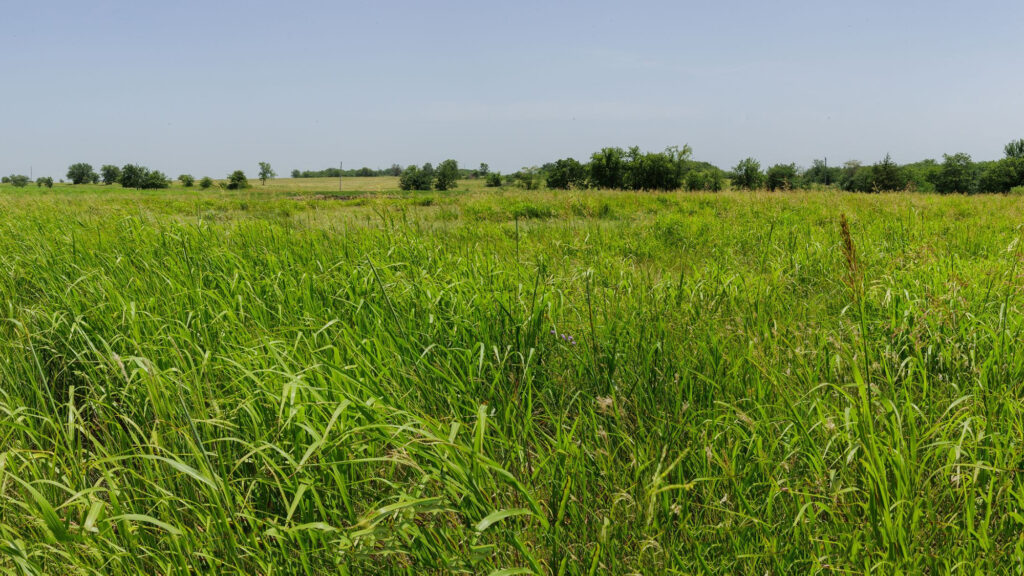
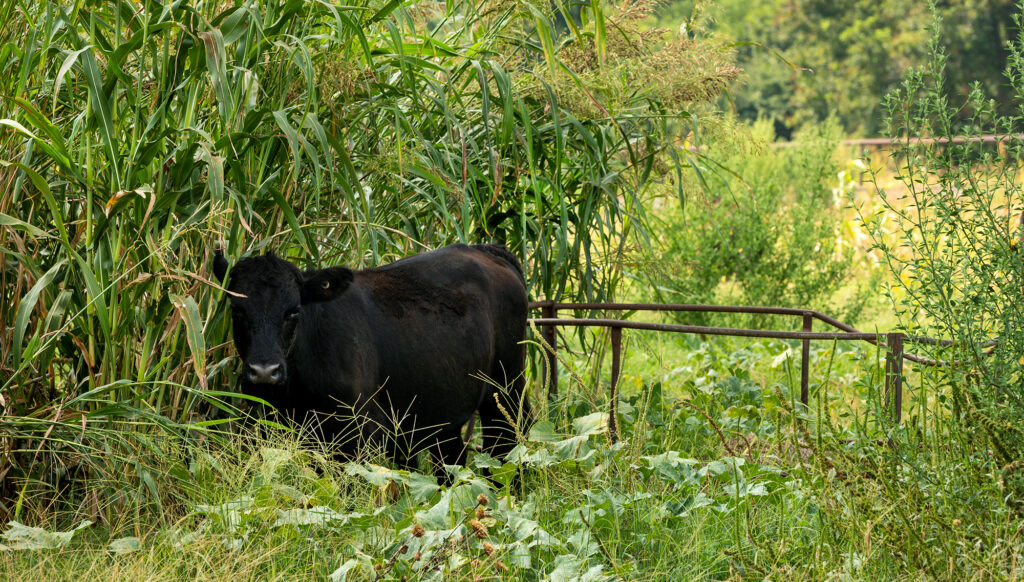
Historically, Oswalt Ranch was rotationally grazed and had occasional prescribed burns applied to enhance wildlife habitat. A large, prescribed burn-stocker cattle grazing project was conducted in the early 2010s. Oswalt Ranch is also home to a robust low-stress cattle handling and feeding facility. The facility serves as an entry point for purchased livestock and any large-scale processing and health management needs thanks to its system of holding pens with feed bunks and large shipping and receiving facility.
Pasture Demonstration Facility (PDF Ranch)
Just northwest of Ardmore, Oklahoma, Noble’s Pasture Demonstration Facility, commonly referred to as PDF Ranch, still lives up to its name in many ways. The 1,022-acre ranch is home to a flock of hair-sheep and is often grazed by cattle from other ranches as forage is available.
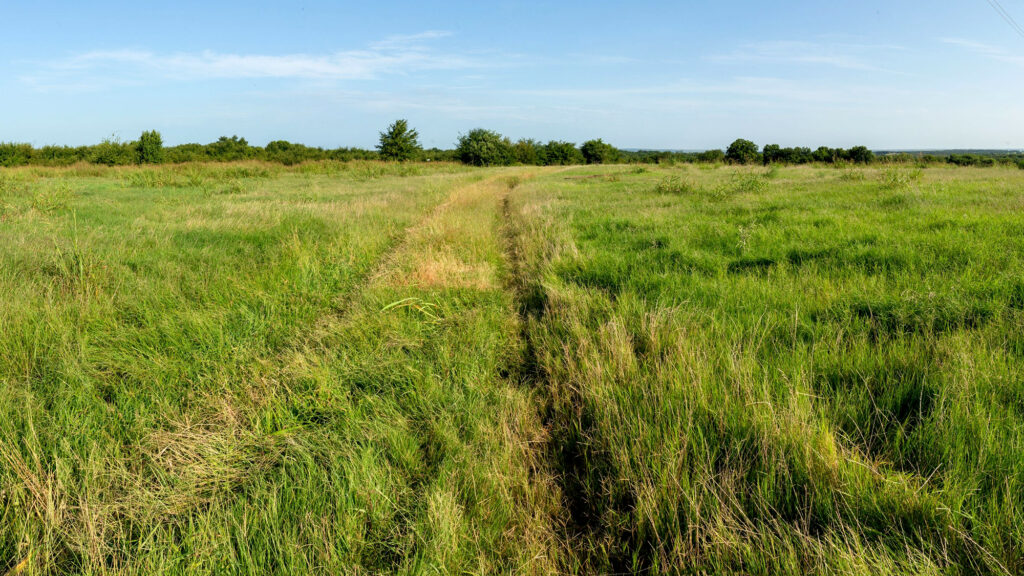
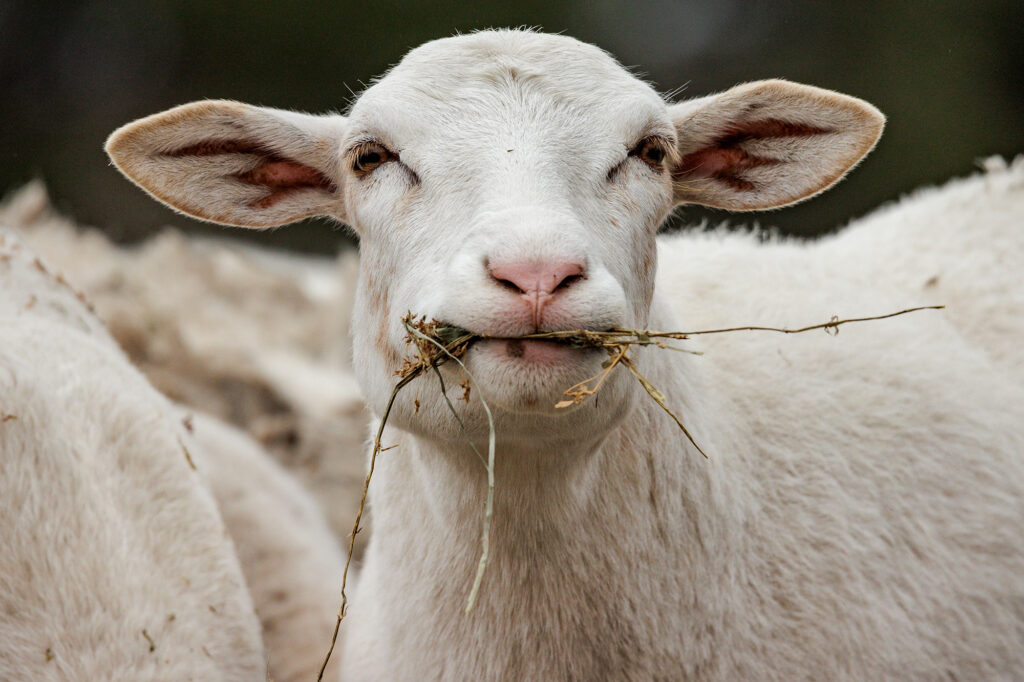
PDF was purchased in 1976 from the Sturm family. It was managed as a demonstration farm for applied research projects for small grain-stocker grazing and cow-calf management on introduced pastures using “best management practices” in the application of conventional use of fertilizers and herbicides.
The most recent addition of 200 adjacent acres occurred in 2011. Managers at PDF Ranch are working toward restoring introduced pastures and grazed cropland to “naturalized” and native pastures. Researchers monitor the change in soil health and forage production since it transitioned to regenerative management in 2021. Previously the ranch was conventionally managed.
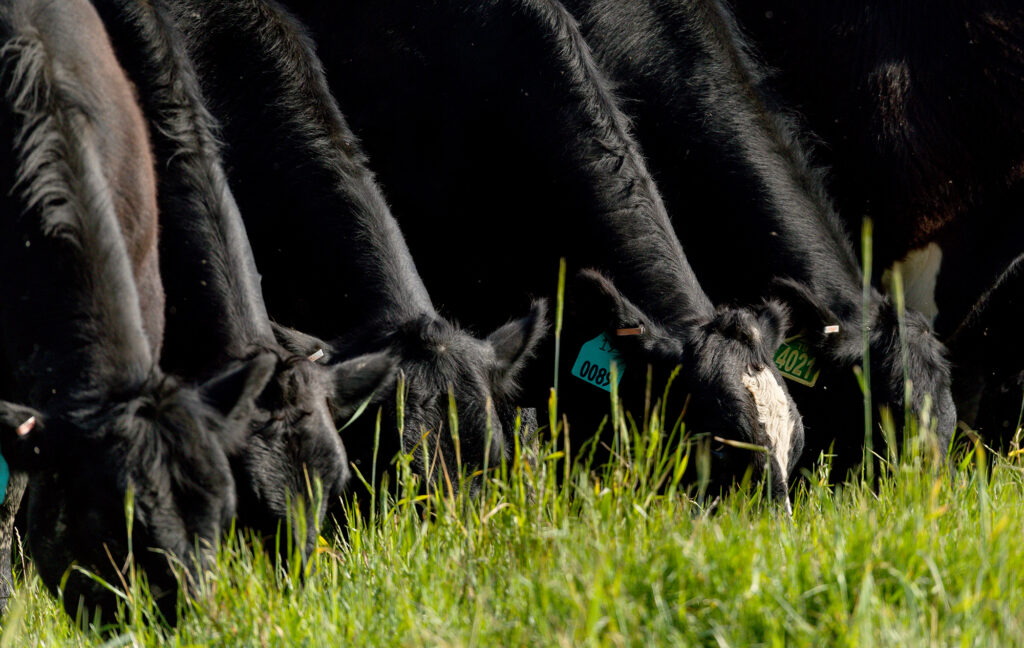
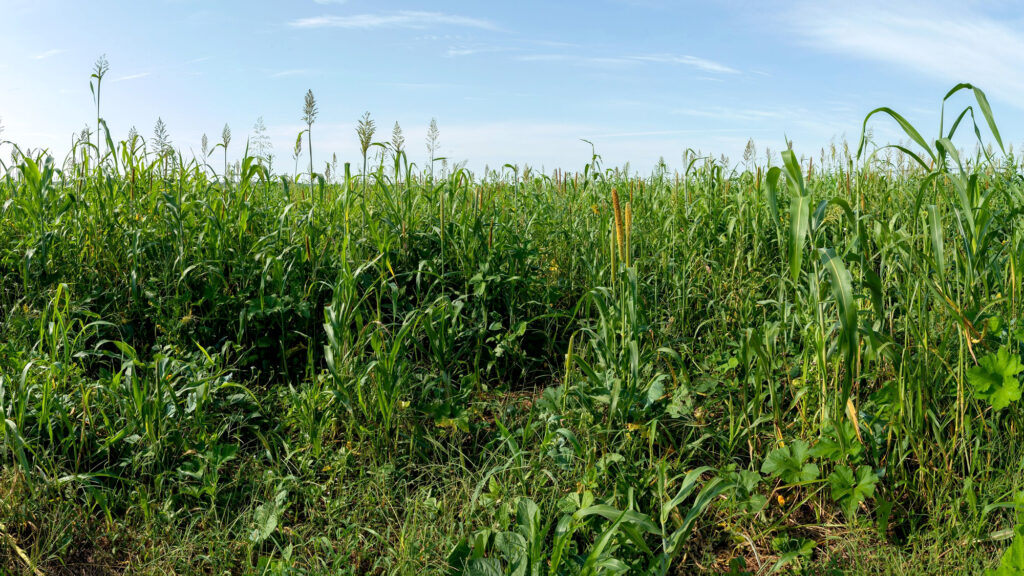
Red River Ranch
Perhaps Noble’s most enterprise-diverse ranch, Red River Ranch is situated along the Red River on Oklahoma’s southernmost border. Red River Ranch is predominantly introduced pastures and grazed cropland that was managed conventionally until 2021 when regenerative management was initiated. The long-term management objective is to restore native grasses to the grazing lands by applying regenerative management.
Similar to Coffey Ranch, Red River Ranch grazes two herds of cows for the FFAR grant’s 3M Project. The ranch is also home to a flock of hair-sheep and Spanish-cross goats. All grazing animals are managed to improve soil health and forage productivity while maintaining profitable enterprises.
The original acres of the Red River Ranch were purchased in 1973 from the Allison family. More adjoining land was purchased in the 70s and 80s. The last parcels of land were added in 2012. Red River Ranch was used as an applied demonstration farm where grazing and forage management, small grain-winter stockers, cow-calf management, and pecan management was demonstrated under conventional “best management practices” for the land resource.
Red River Ranch is home to one of the oldest improved pecan orchards and native pecan groves in Oklahoma. Researchers at Noble work in the orchard to monitor quality and productivity as the ranch transitions from conventional management to regenerative principles.
